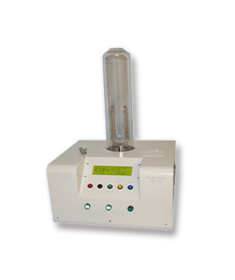
NewsInformation Center
What is the ASTM D2863 oxygen index test?
2023/09/11
ASTM D2863 is a standard test method for measuring the minimum oxygen concentration needed to support candle-like combustion of plastics. The oxygen index is expressed as a percentage of volume. The test involves passing a mixture of oxygen and nitrogen over a burning specimen and reducing the oxygen level until a critical level is reached.
The oxygen index refers to the lowest concentration of materials that can burn in an oxygen environment and is an indicator that the material can sustain its own combustion. It is used to evaluate the combustion properties and fire resistance of materials.
In the ASTM D2863 test, a material sample is placed in a vertical combustion chamber and the combustion behavior of the material is observed by controlling the oxygen concentration. The test begins by igniting one end of the sample, then gradually reducing the oxygen concentration in the combustion chamber until the material can no longer sustain combustion on its own. The oxygen concentration recorded at this time is the oxygen index.
The results of an oxygen index test are usually expressed as a percentage. For example, an oxygen index of 30 means that at least 30% oxygen concentration is required to maintain the material's combustion. A higher oxygen index means that the material is more difficult to burn in an oxygen-deficient environment and has better flame-retardant properties.
Oxygen index testing is useful in assessing a material's flammability, selecting flame-retardant materials, and determining the material's intended use. It is widely used in materials research and production in plastics, rubber, insulation materials, electronic components and other fields.
What is the limited oxygen index standard?
The Limited Oxygen Index (LOI) is a standard used to measure the flammability of materials. It is determined by testing the minimum concentration of oxygen in a mixture with nitrogen or other gases, in which the material can support combustion. The LOI is expressed as a percentage.
The LOI standard provides a quantitative measure of a material's fire resistance and its ability to self-extinguish. Generally, materials with a higher LOI are considered to be less flammable and have better fire resistance properties. The LOI test is commonly used in industries such as aerospace, construction, and automotive to assess the fire safety of materials and to guide material selection for applications where fire resistance is critical.
Previous: What is the Erichsen scratch test method?
N e x t : Information about the flammability testing standards ASTM D6413, NFPA 701, and I




